
On The Go – Catching Up: Day 7, 8 & 9
I feel like I’m cheating doing it this way, but this at least proves that I’m enjoying my vacation first, and keeping up with this second. If I was a writer doing a story about Japan, then the other way would be correct.
So this will be for Nagoya, days 7 – 9:
Day 7:
Today’s objective is the “Toyota Commemorative Museum of Industry and Technology”
As always, this journey begins with walking. Yes, we could take a local train or hop into a cab but for me at least, it’s good to keep up the steps.
This turned out to be so much more than I ever imagined it would be.
We went to this looking forward to a history of the Toyota company’s start as an automotive manufacturer, and instead learned about the man, his roots and what motivated him to take the paths he did.
Toyota originated in the early 1900s as Toyoda, from Sakichi Toyoda’s invention of automatic looms, with his son, Kiichiro Toyoda, establishing an automotive division within the company in 1933. This division created the first Toyoda passenger car, the Model AA, in 1936, along with changing their company name to Toyota in this same year.
And so, the Toyota Motor Company was officially founded in 1937, evolving from the loom business into a global automotive manufacturer and a diverse group of companies, still including the loom and textile businesses today.
All I can say is: This Museum was amazing.
First of all, it’s huge.
Secondly, and predictably, it’s well laid out and clean.
But mostly:
I expected cars, and I got cars in the end, but the whole ‘cotton & spinning thread & using looms to weave cloth’ was just brilliantly presented.

I know some of this is not strictly a Japanese thing; the US has been working with cotton since long before the founding of the country. I guess it’s just the first time its ever been explained to me so clearly and demonstrated so well.
For example:
I never knew how simple and almost magical the process of taking cotton and spinning it into strong thread really was. To watch the new thread break when pulled, but then a few more spins of the wheel and it’s strong enough to resist breaking.
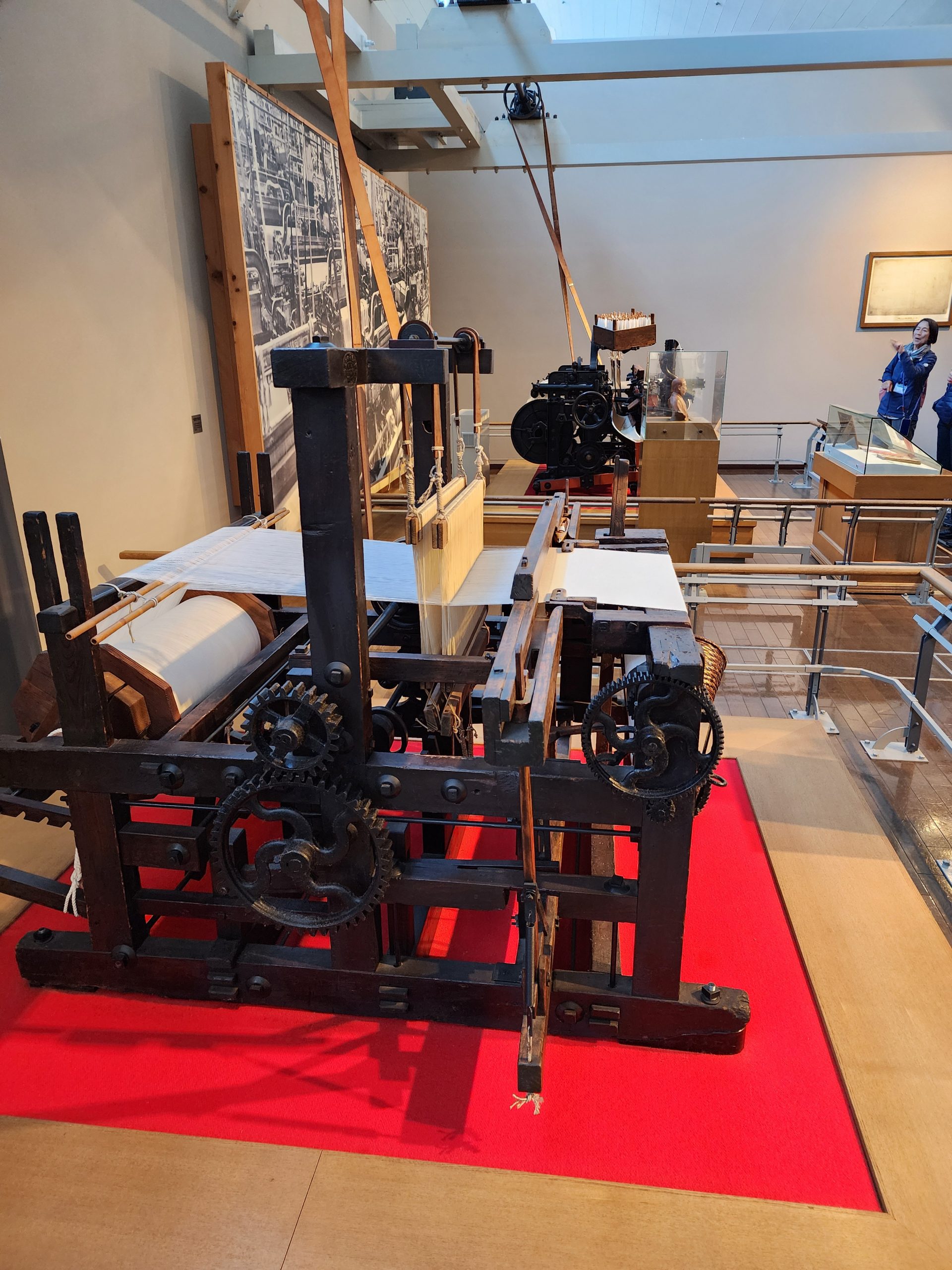
There was a huge presentation of the process of weaving cloth through the ages. From the simple strap loom which straps around the user’s back, to when it was made into a machine where the operator could sit at it and control it with her feet and the tapping down the newly added threads each time the shuttle passed through.
Then onto more complex machines where the process was controlled by each machine being tethered to a central power source, like a shaft connected to a water wheel powered by a man-made or natural waterfall.

There was a demonstration of a machine where the threads were manipulated by a process from above the main weaving portion so that when the shuttle went through, each time it went through the threads it passed through were divided differently, thereby creating a different pattern in the weave.
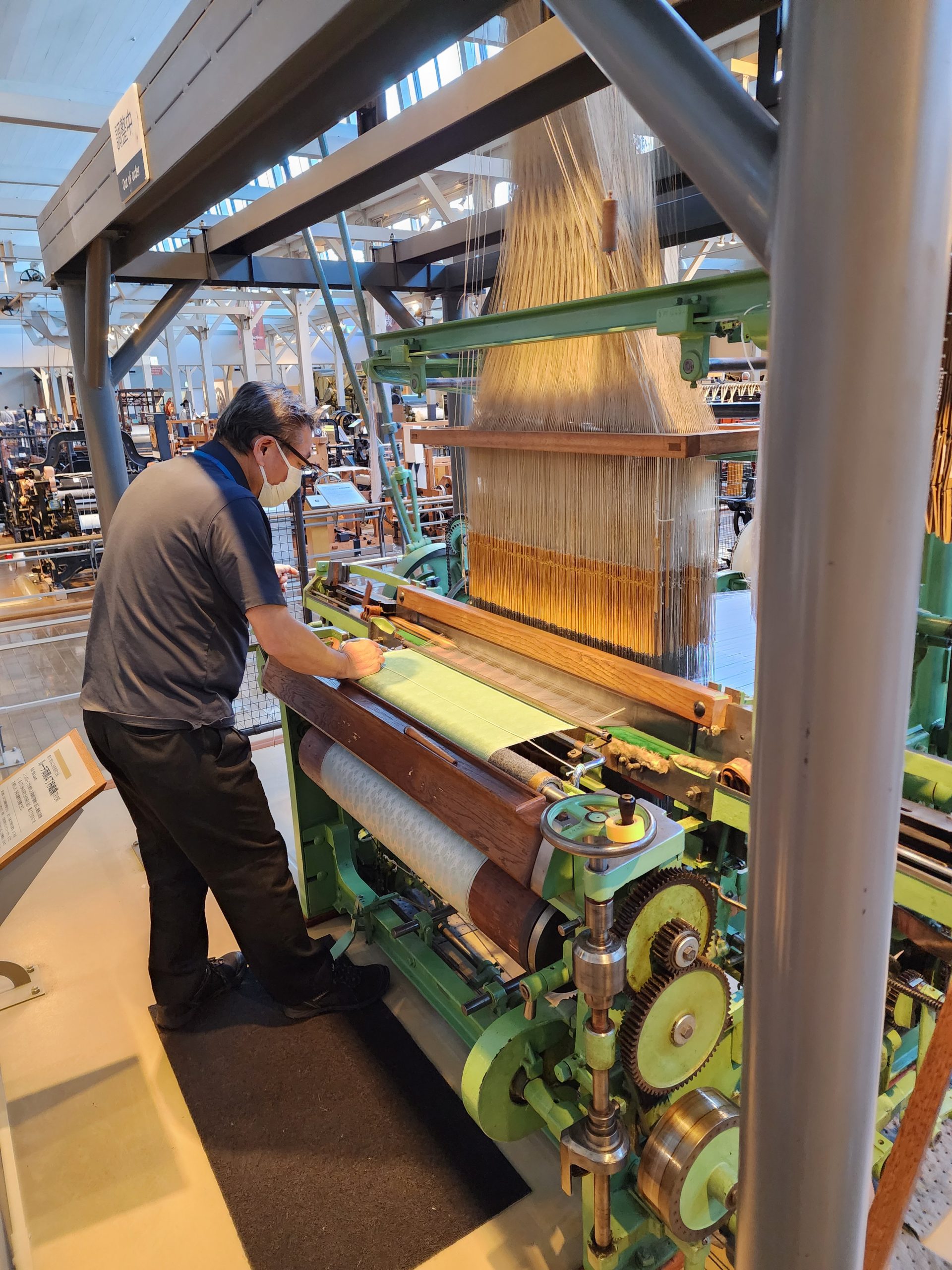
There was even an old machine that was still functional that was able to take a collection of flat threads as input, and weave a tube material, like a giant wind sock, weaving in a consistent circular pattern, feeding the threads in one end and rolling up the long tube at the other.
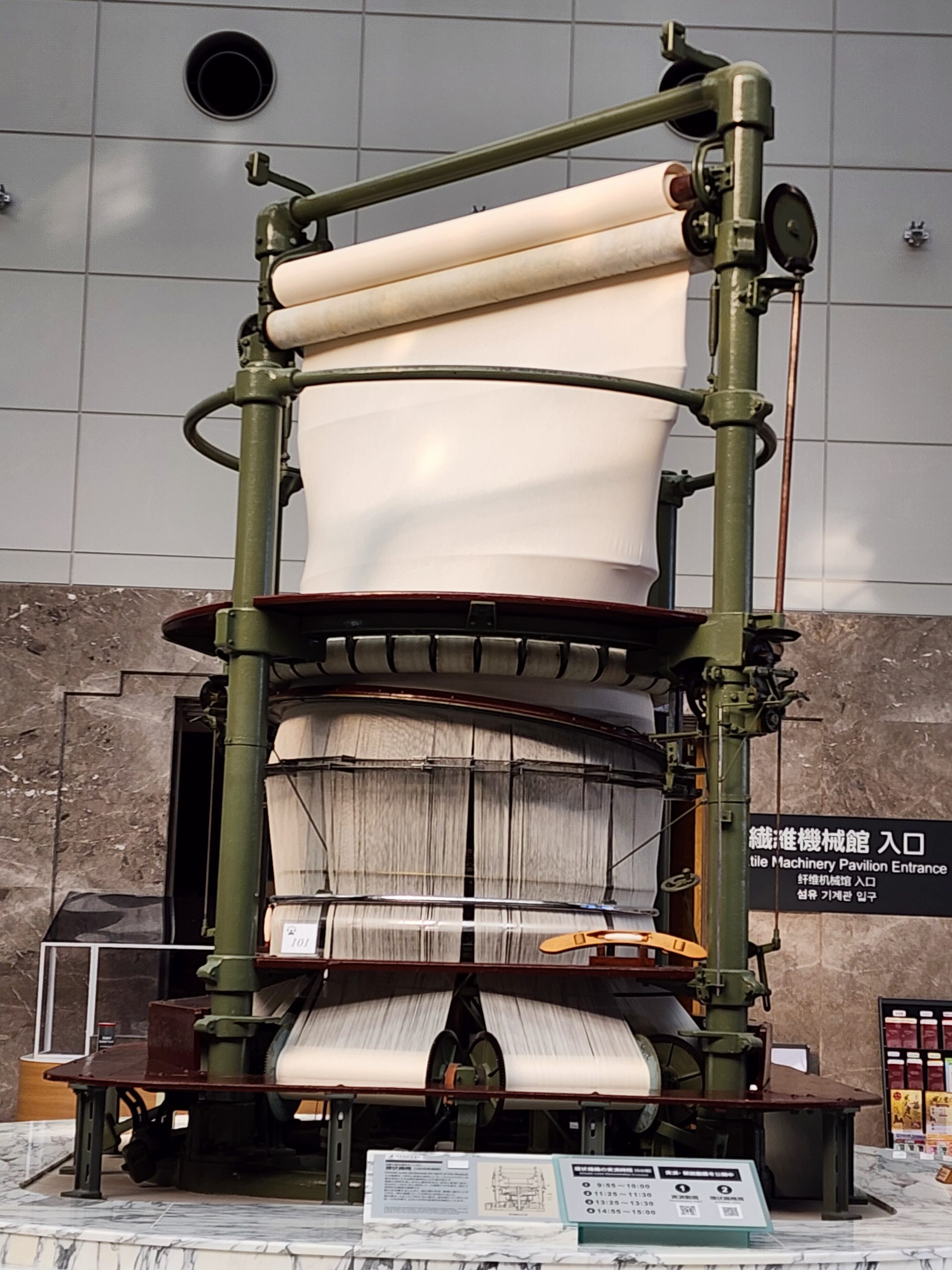
And then it got into the modern machines where the process is controlled by computer and the shuttle has been replaced by a thread being pushed back and forth by controlled puffs of air over 700 times a minute.
Compared to this, for me at least, the cars were a simpler but interesting follow-up to a brilliant presentation.
Never the less, the automobile portion of the demonstration was just as large and just as impressive.
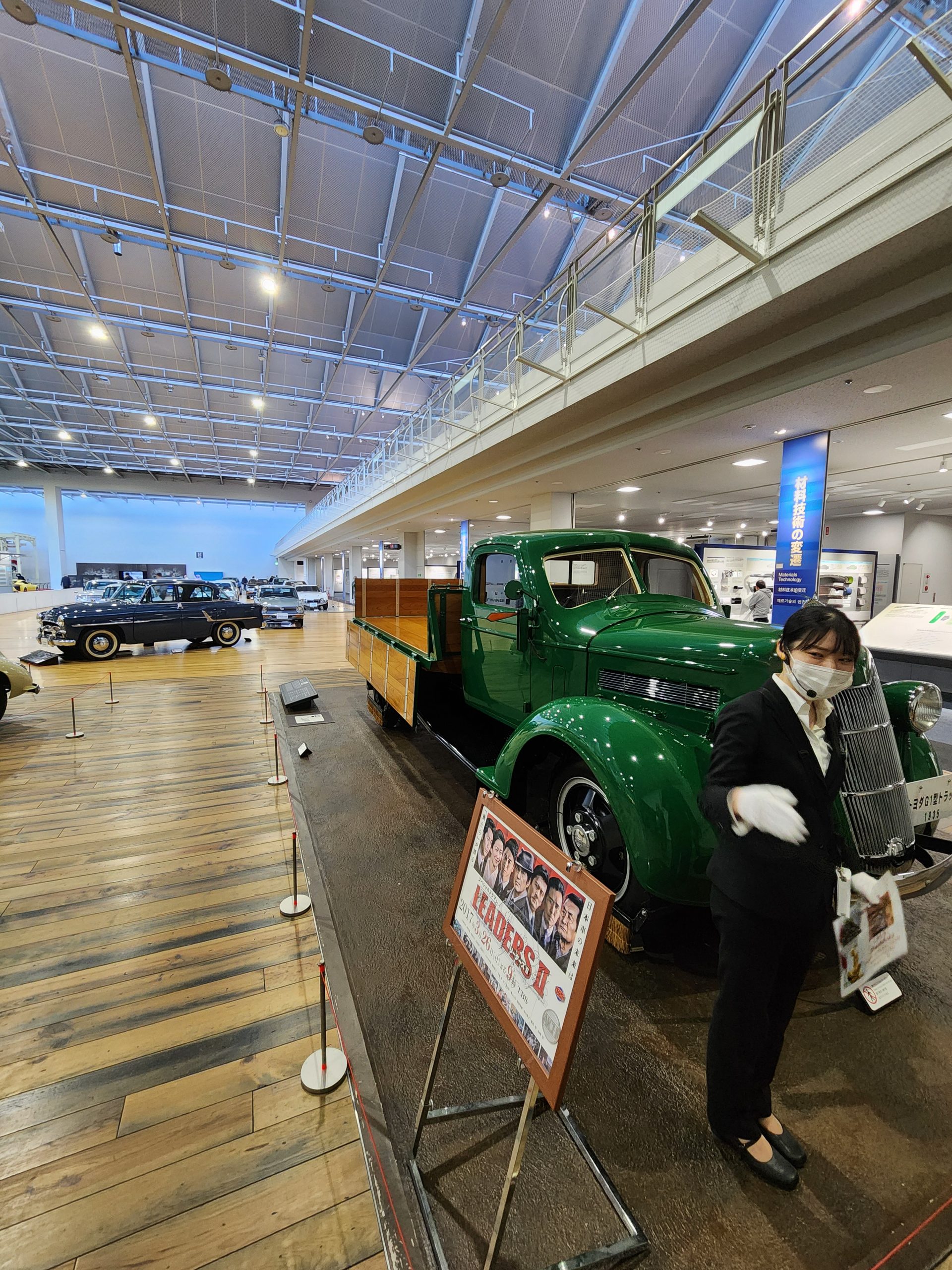
They went through the history of their start into the auto industry and had live presentations of the process throughout and naturally, many examples of their cars through the years.
This turned out to be one of my favorite adventures of the trip.
Day 8:
Today’s objective: The temples at Gifu.
I’ve learned since arriving here in Japan that one must put aside one’s ideas and expectations of our western cultures.
In the west, at least as far as the United States are concerned, it is expected that if you wish, you can probably find someplace to eat in the early hours. Most breakfast restruants are open early enough to dine if you wish, or to pick something up for the drive or train to work.
Japan’s culture is a bit more focused in the wee hours than we are.
It seems that in Japan, the focus is to get up, and get to your job to start the day. In the process of this, you either need to eat before you leave home or take advantage of one of the many available resources to fulfill your need. And, you must do so without using restaurants of any kind. This is because most do not open until 10:00 AM, with the majority opening at 11:00 AM.
In Japan however this has been taken care of.
First off, on almost every block there is a convenient store, all open 24 hours. They are Family Mart, Mini Mart, Lawson’s Market, and the ever popular 7-11. These stores are filled with everything an on the go Japanese commuter needs to get the day started right.
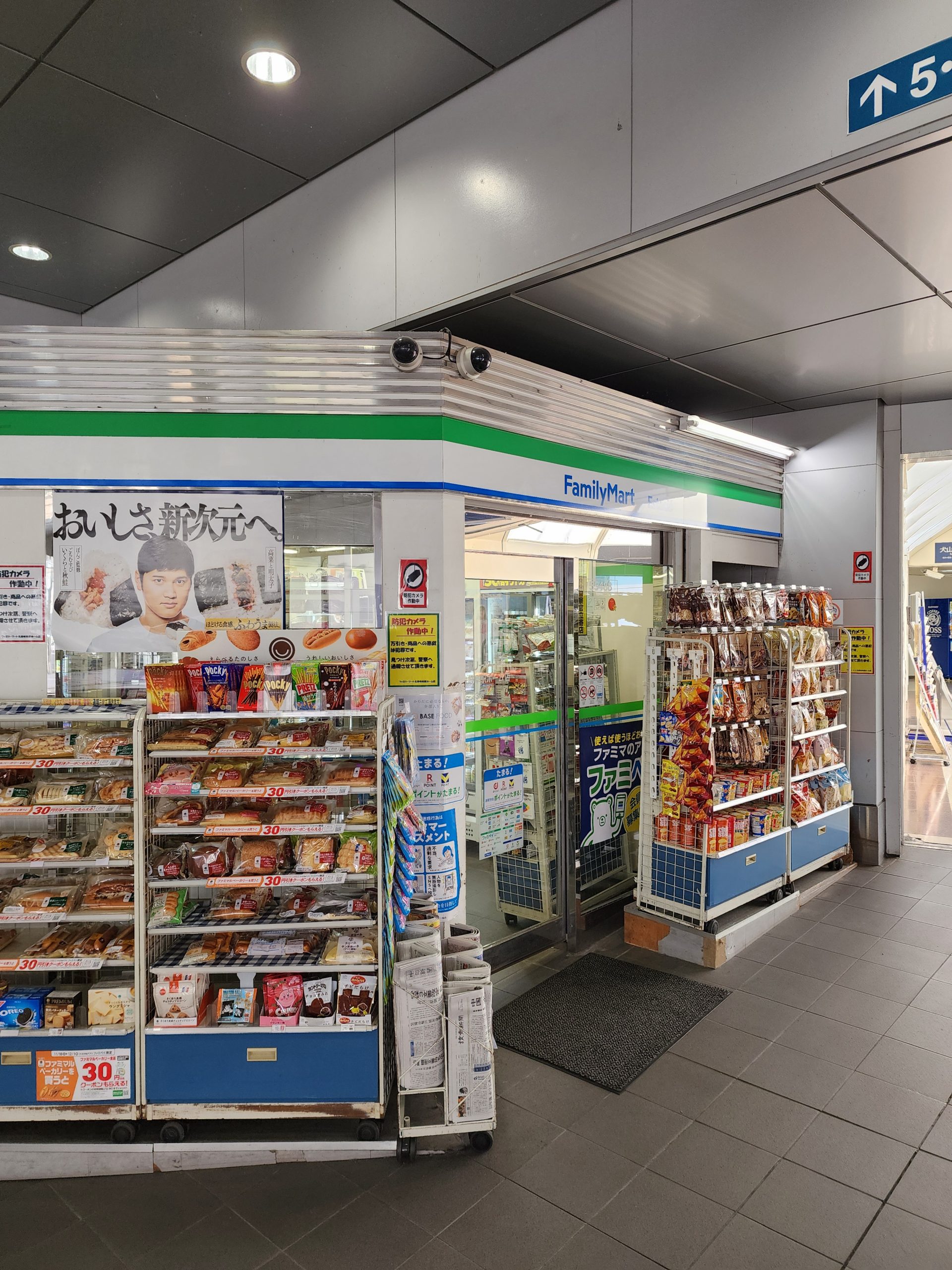
If that’s not enough, there is always the ever popular vending machine (see previous article featuring canned corn soup). These are as numerous in the cities and country sides as gas stations are in America. And, they offer everything from drinks, cold and hot, to soups and many other items.

After getting off of the train In Gifu, we found ourselves in a smaller less busy town, but not quite so small that it could be called a village. In this case, the village was built around a smaller mountain on which the temples and shrines were built. This also included another ancient castle high atop this same mountain.
In this case, the shrines seemed to skirt the mountain, being built around the lower foot with the castle built on top.
Access to the top in this case was only by cable car or by choosing one of many steep trails winding their way to the top.

The first interesting thing to me was, as we were walking around the base visiting the shrines we came to on our way to the cable car, how the various houses were all built right up to and up the base slope of the mountain.
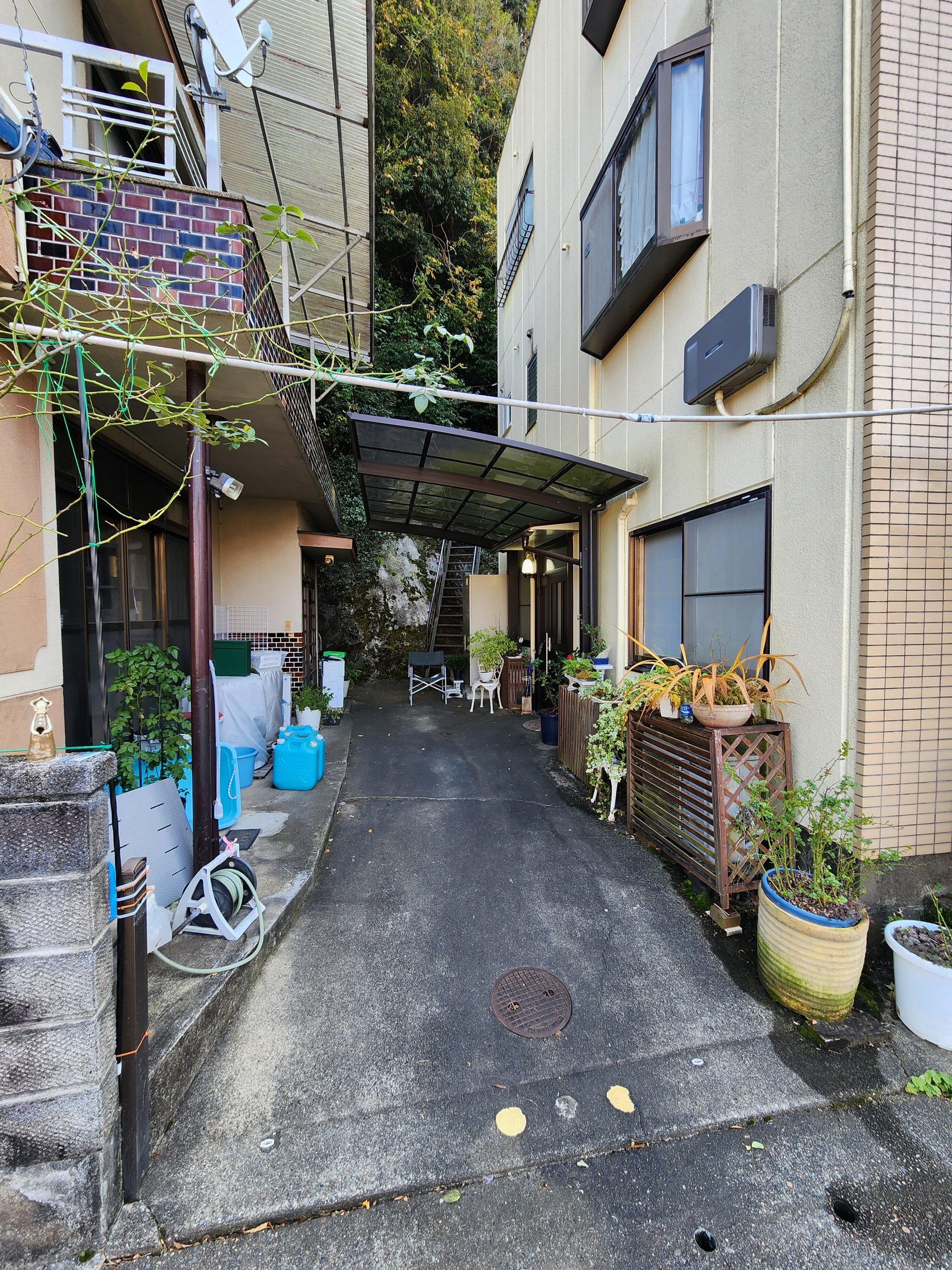
It’s important to understand here that in this case, this is not that kind of mountain that begins with a simple slope building up to a steeper grade and then cliffs. This starts at the bottom with a mostly shear cliff face entwined with vines and trees working their way up.
And there, all along the little roads we followed, were little Japanese homes, sometimes built right into the mountain side.
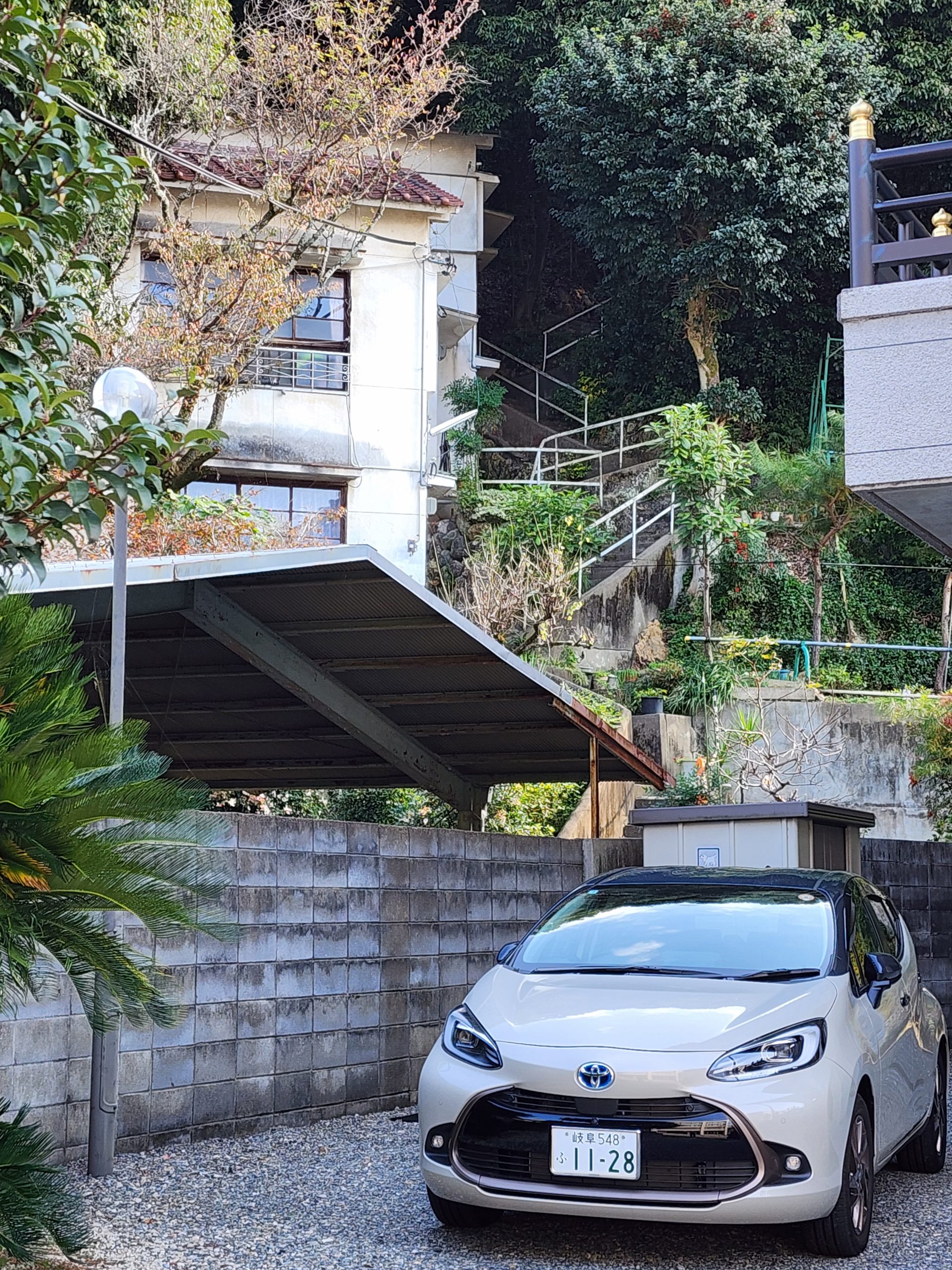
Very picturesque and quiet unless you put too much thought into the possibility of an avalanche.
We came upon this one rather large shrine area that seemed to be over run with families and their little 3, 4, and maybe even 5 year old children all dressed in their finest little kimonos, fancy shoes and all. Most parents had grand parents along and a photographer for pictures. The pilgrimage seemed to involve climbing up the various steps up to the last gate into the temple area where they would pose at the top for pictures and then head back down to go home. We also saw several families with obvious new born children also on a similar pilgrimage, although without the kimonos.
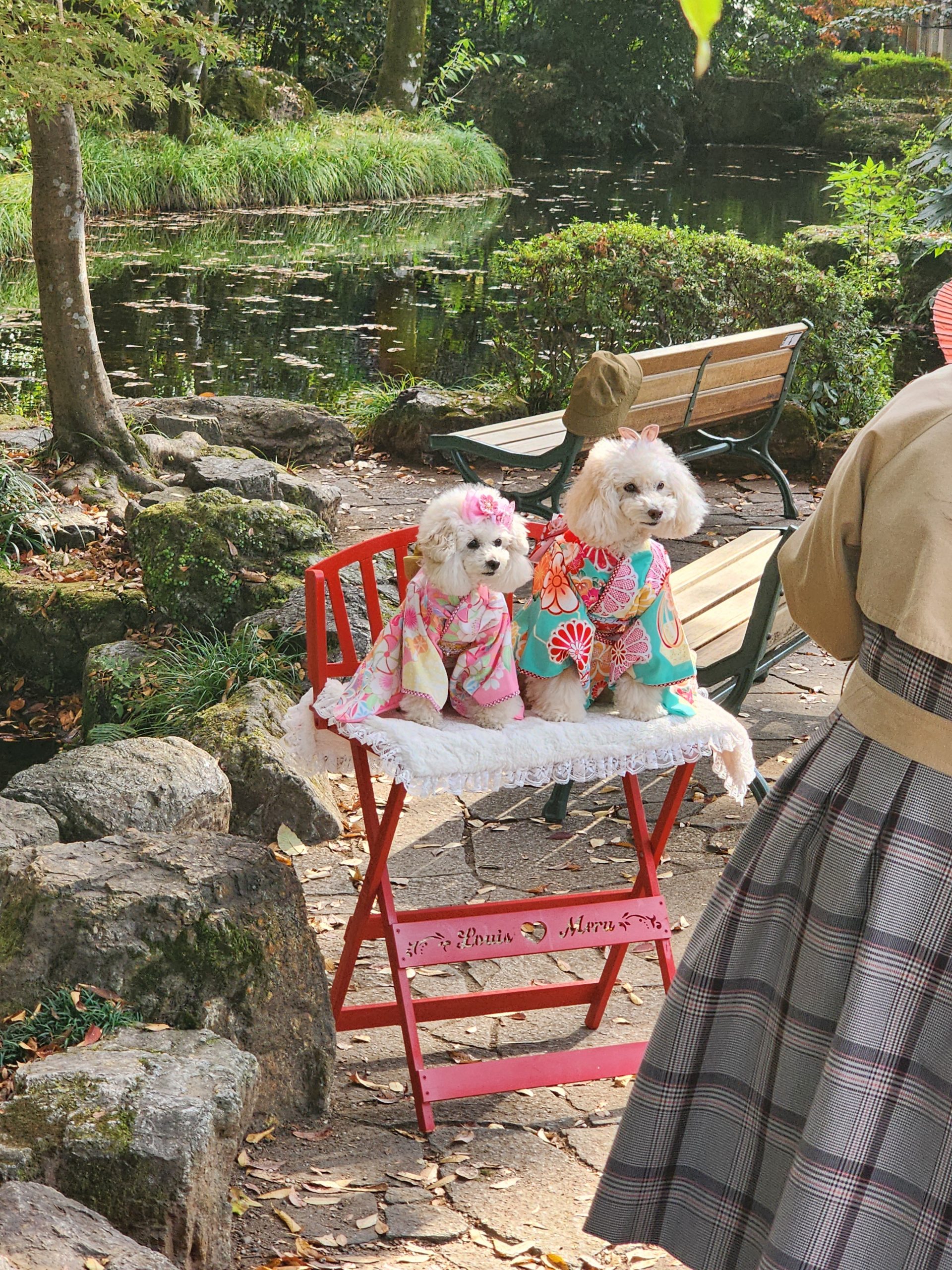
There were even poodles in kimonos posing and smiling as poodles are known to do, with their attending owners clicking happily with their cameras.
Finally we made the base of the cable car.
Unlike the last castle which involved a tram or train pulled by a cable, this was an actual car dangling from a cable, one always going up and one down, about every 15 minutes.
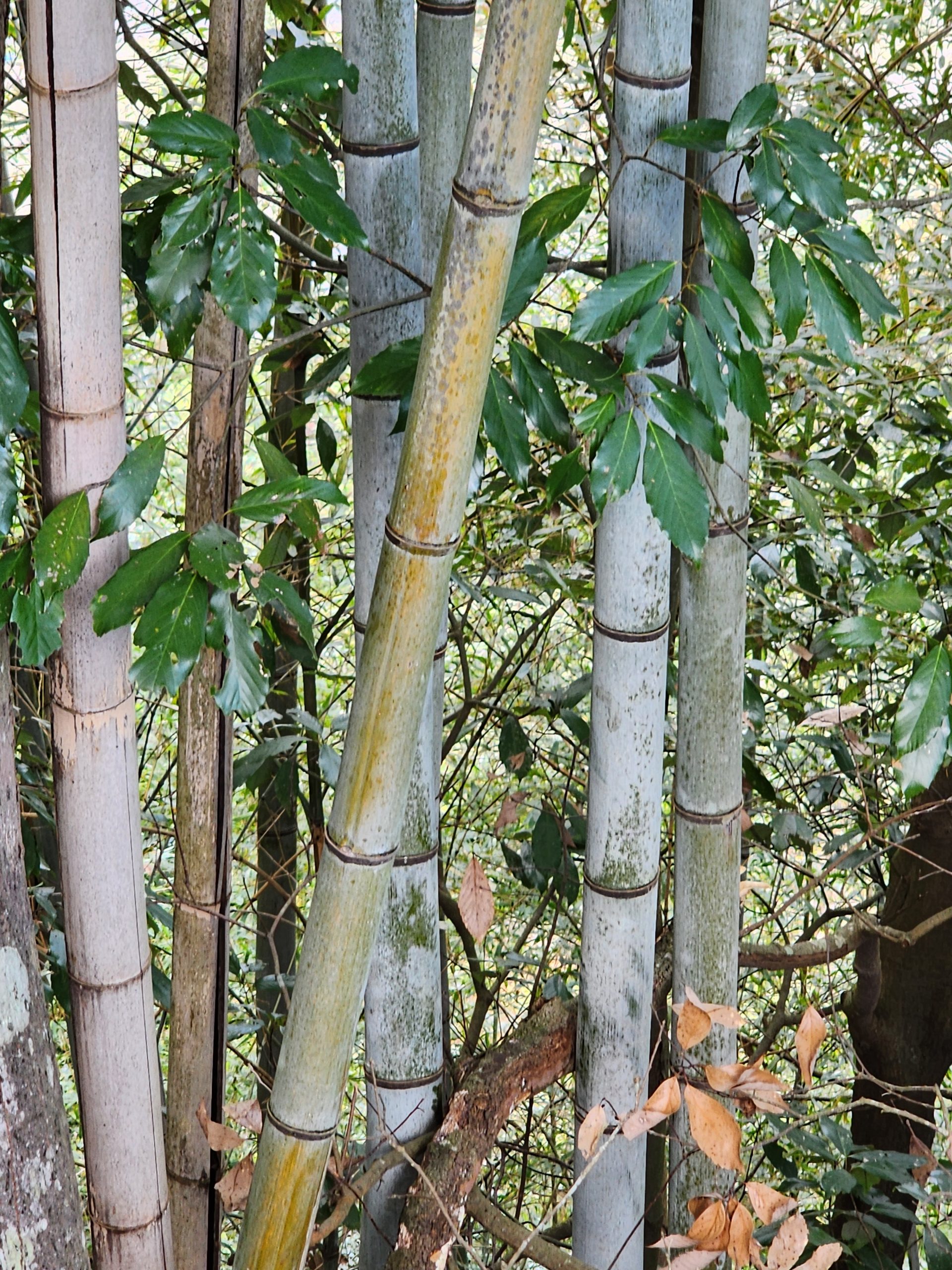
Once you got to the top the view was breathtaking, as were the multiple steps to complete the journey.
The interesting thing here was, you didn’t know until you reached the top that there was an additional cost to get into the castle.
Ah well…
The pilgrimage was still worth the trip.
Day 9:
Today’s objective: Today we rest!
Well….Sort of.
The concept here is we do not commit ourselves to any day long journey that gets us up at “0-Dark-30” in the AM to catch a train and catch another train and then walk all day until we finally return.
Although I like these days as well, in this case we keep it simple, allowing for a nap sometime mid day, followed by a walk to some dining destination where we can fulfill some culinary objective as well as whatever else comes along the way.
For specifics, we needed to sleep in, do the laundry to “vacate the baboon” living in my suitcase, and after a relaxing snooze, head out for a 30 minute walk for some Soufflé Pancakes.

After figuring out the laundry machines, which washes and dries in one machine, and taking our mid day break, we were ready for the early evening stroll to Pancakes.
In route, we found ourselves in a part of town where I can only say must be for the upper financial echelons of the population.
Every major brand of product one has ever heard of, and many more I had not, were all laid out along the streets. And in usual Japanese fashion, nothing is ever small or simple. Most store fronts are entrances to large internal multi level shopping complexes where each floor is a different establishment.

When we reached the location of the Pancake place it was down this well adorned stairway to a lower restaurant area. There at the bottom was this small bright place where they could seat maybe a dozen small groups and single patrons.

Everything was made to order, as you could see through the window that showed the small 1 person kitchen where it was all done.
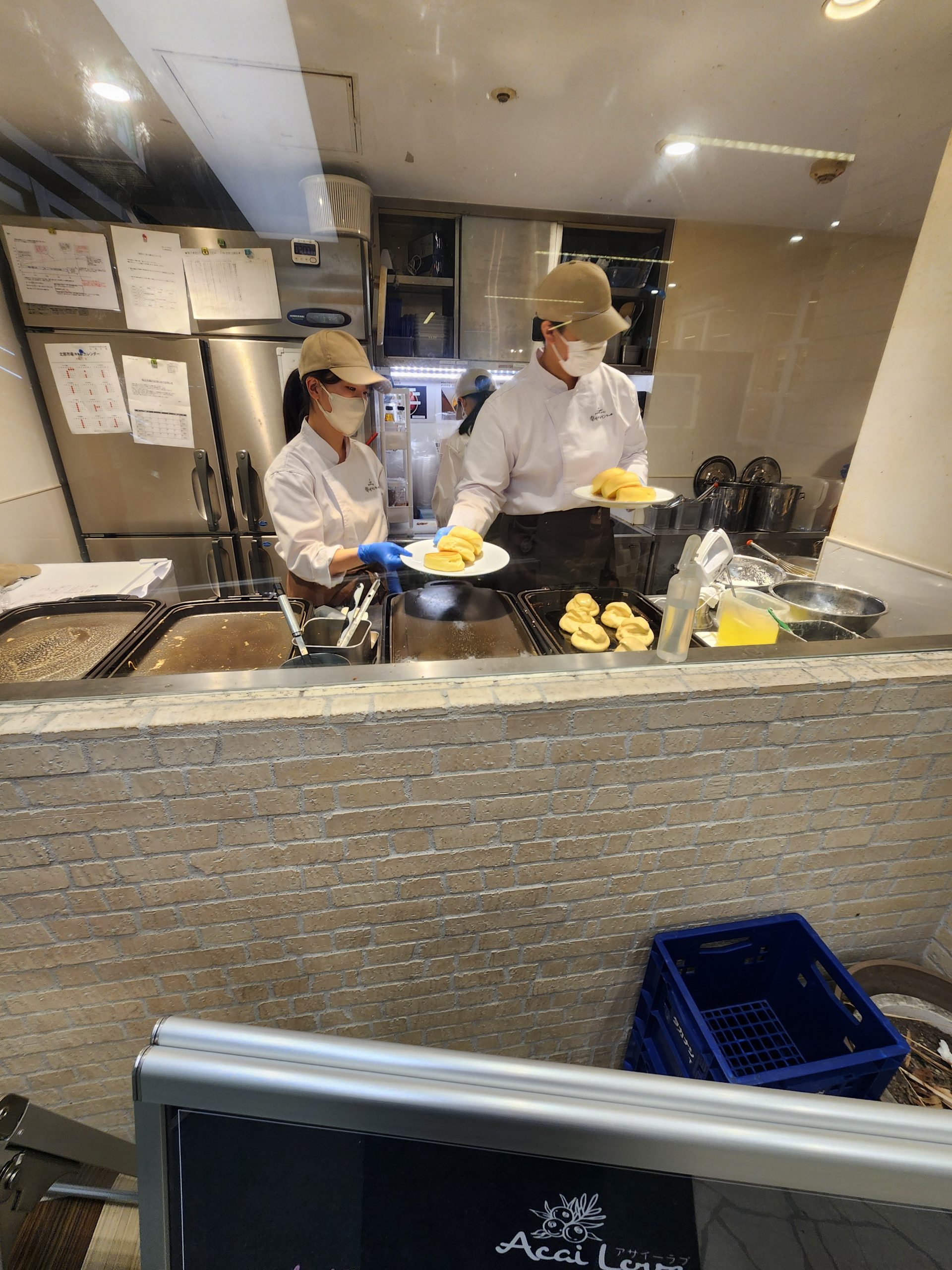
The Pancakes were thick and lite and fluffy, yet creamy.

On the way back Amelia saw a sign for a book store she had always wanted to visit called Book Off, so in we went.
Entering Into an elevator where after 7 floors filled with all kinds of different things we arrived at this “book store”.
It was, to say the least, huge!
Naturally everything was in Japanese except for the odd paperback I saw by Dan Brown, and much of it was anime books of every flavor imaginable.
Then, in another section, we found an entire area dedicated to collectable figures of just about every anime and Manga show ever made.
I got my first figurine:
Froppy, from My Hero Academy.
Time to crash…And tomorrow: Off to Tokyo!




